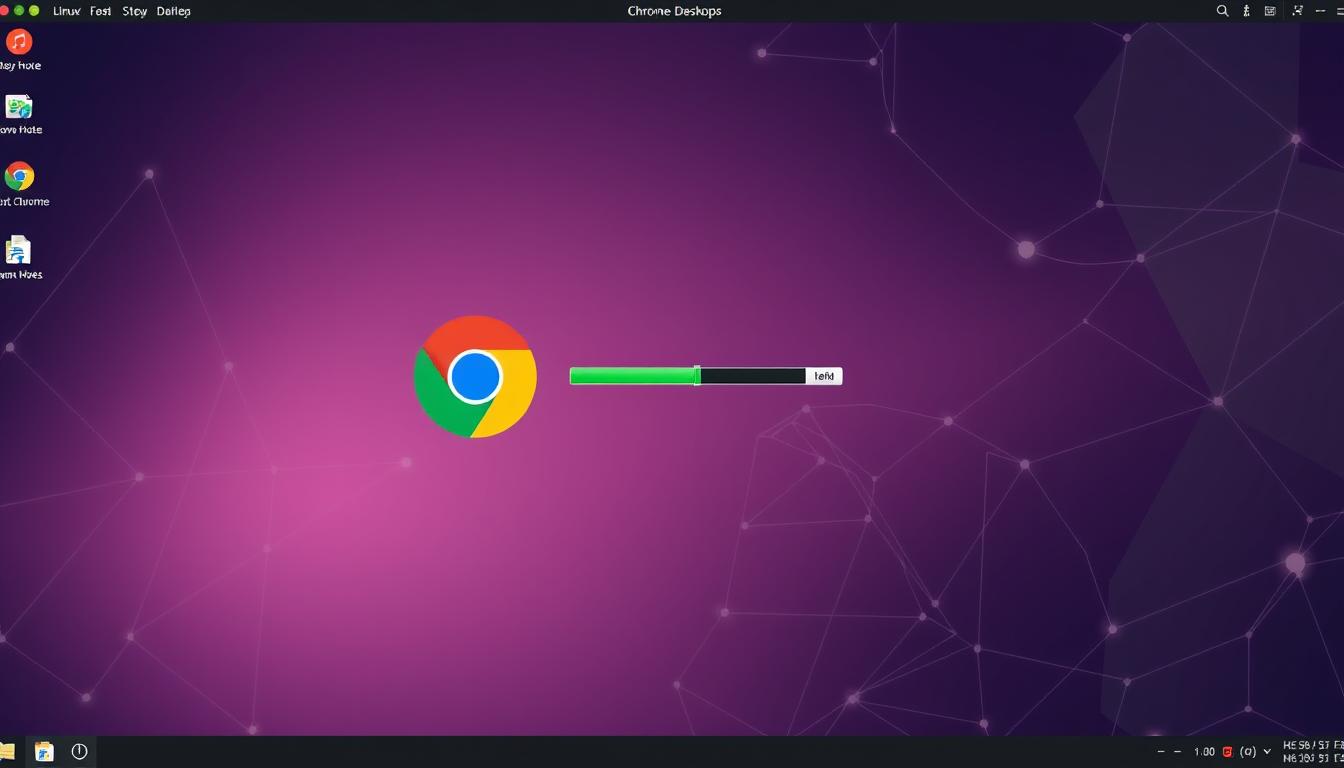Open source is now the main way to make software in many fields. Companies use open source code to create their own products and services. By joining open source projects, companies can shape the project’s future, attract skilled workers, and save on upkeep costs.
But, diving into open source without a plan can cause problems and legal issues. This guide will explain how companies can contribute to open source, how projects are set up, and the key steps for making a difference.
Key Takeaways
- Open source projects offer chances for companies to shape software and draw in the best talent.
- For successful open source contributions, a strategic approach is needed to understand project structures and community dynamics.
- Contributing to open source is more than coding. It includes roles in documentation, testing, and community management.
- Following project rules and good communication are key to lasting involvement in open source communities.
- Celebrating open source through events like FOSS Month can help spread the use and growth of open source technologies.
What is Open Source and Why Contribute?
Open source means sharing software code with everyone. It lets anyone use, change, and share it. This way, many people work together to make it better.
It’s all about teamwork and sharing ideas. Open-source projects grow fast because of this. They help us use many important technologies every day.
The Power of Collaboration and Transparency
Since 2005, over 13,500 developers from more than 1,300 companies have worked on the Linux kernel. This shows how open source brings people together. It’s a big team effort.
Many companies see the value in helping open-source projects. Intel, IBM, and Samsung have special programs for this. They show big companies care about open-source too.
Benefits of Contributing to Open Source Software
Helping out with open-source projects has many perks. You can make software better, learn new skills, and meet others. It’s a great way to grow your career.
You can also become a leader or manager. It’s good for your professional skills. Plus, it can save your company money in the long run.
“Contributing to open-source projects can help companies attract talent who are already familiar with the projects, creating recruitment opportunities within specific industries.”
By contributing, companies can shape the project to fit their needs. Users play a big role too. They help by giving feedback and reporting bugs.
Understanding Open Source Project Structure
Open source projects have a clear structure and rules. They have different roles and tasks. This keeps the project strong, encourages teamwork, and makes development smooth.
Roles in Open Source Communities
In an open source community, several roles are key to success:
- Project Maintainers – These are the leaders who guide the project. They decide what changes to accept and manage the project’s growth.
- Committers – Committers are trusted to add changes to the code. They help keep the code quality high.
- Contributors – Contributors are the heart of the project. They add code, documents, and bug reports to improve it.
Knowing these roles helps new contributors join and find ways to help.
| Role | Responsibilities | Example Projects |
|---|---|---|
| Project Maintainers | – Set the project’s vision and direction – Review and merge contributions – Manage the project’s roadmap and release cycle | Linux, Kubernetes, WordPress |
| Committers | – Review and merge contributions from other contributors – Ensure code quality and consistency – Collaborate with maintainers on project decisions | Git, Python, Node.js |
| Contributors | – Submit code, documentation, and other improvements – Participate in discussions and issue tracking – Provide feedback and report bugs | Mozilla Firefox, Blender, Rust |
By knowing the roles and structure, new contributors can better join and contribute to the community.
How Open Source Contributions Work
Contributing to open source projects is rewarding and collaborative. It follows specific guidelines set by maintainers. The process varies by project but usually includes following coding style and bug reporting.
Contributors often post patches or code changes on mailing lists or GitHub. They must be ready to respond to feedback and revise their work. Sometimes, big contributions need ongoing maintenance from the original contributor.
Knowing the contribution process is crucial for open source projects. By understanding the project’s guidelines and following submission procedures, contributors align with the project’s goals.
The open source feedback loop drives continuous improvement. By embracing this process, contributors make lasting impacts on the technologies they use daily.

| Contribution Type | Percentage of Total Contributions |
|---|---|
| Code | 70% |
| Documentation, Typo Fixes, Translations | 30% |
Anatomy of an Open Source Project
Open source projects have common parts that help them work together. Knowing these parts makes it easier for new people to join in.
Common Components and Documentation
Most open source projects have a few key parts:
- Source code repository: This is where the project’s code lives. It’s often on sites like Git and GitHub.
- Documentation: Important files like README, CONTRIBUTING, and CODE_OF_CONDUCT. They tell you about the project’s purpose and how to help.
- Issue tracker: A place to report bugs, ask for new features, and manage tasks.
- Mailing lists or forums: These are where people talk, work together, and share ideas.
- Licenses: These are rules that say how you can use, change, and share the project’s code.
- Core team of maintainers: These are the leaders who guide the project, check contributions, and make big decisions.
Together, these parts make a strong open source community. They help with openness, teamwork, and always getting better.
“Open source software is public code usually developed collaboratively, involving multiple individuals or one person.”
The project’s documentation is key. It includes the README, CONTRIBUTING file, and CODE_OF_CONDUCT. These help new people understand the project’s goals, rules, and how to help.
Finding the Right Open Source Project
Finding the right open source project can seem overwhelming. But, with the right steps, you can find something that matches your interests and skills. Whether you want to improve your coding, gain experience, or help a cause, look for projects that excite you and offer growth.
Start by checking out popular sites like GitHub. It has a wide range of projects in different languages and areas. Look at the project’s activity, community involvement, and what kind of help they need. This will show you if the project is healthy and if you can really make a difference.
When looking at projects, think about a few things:
- Technical Fit: Check if the project’s technology and complexity match your skills. This way, you can make valuable contributions.
- Community Engagement: Choose projects with active and friendly communities. Here, you can learn from others, get help, and make friends.
- Documentation and Onboarding: Pick projects with good documentation and clear rules for contributing. This makes it easier to join and succeed.
- Project Maturity and Roadmap: Look at the project’s history, plans, and future. This shows if it’s well-maintained and if you can have a lasting impact.
Finding the right project is not just about the tech. It’s also about finding a community and cause that you care about. By choosing a project that fits all these criteria, you’ll have a rewarding experience.
| Platform | Community Size | Focus |
|---|---|---|
| GitHub | Large | Broad range of open-source projects |
| Open Hub | Medium | Insights into open-source projects |
| Libraries.io | Medium | Libraries and frameworks |
| SourceForge | Large | Hosting open-source projects |
| DevHunt | Small | Open-source tools and projects |
By thinking about these factors and looking at different platforms, you’ll find the perfect project. It will fuel your passion and let you make a real difference in the open source world.
How to Contribute to Open-Source Linux Projects
Code Contributions and Bug Fixes
There are many ways to help open-source projects. You can fix bugs, improve features, or add new ones. First, learn the project’s rules for contributions. Then, fork the repository, make changes, and submit a pull request for review.
Experienced contributors can also help with triaging issues and reviewing code. They can even guide new contributors.
Documentation and Translation
Open-source projects also need help with documentation and translation. Good documentation helps new users and contributors. You can improve existing docs, write tutorials, or translate materials into different languages.
These efforts are crucial but often overlooked. They make the project more accessible and user-friendly. By helping with documentation and translation, you show your skills and support the project’s growth.
In the UK, there are about 3.2 million GitHub accounts. Yet, only a few thousand actively contribute to open-source projects. Contributing to big projects like the Linux kernel can lead to job offers. In tech, practical skills are more important than formal qualifications.
Look for projects with many stars and forks on GitHub. The Google Summer of Code and CNCF Contributors page list projects that need help. This makes it easier to find a project that matches your skills.
GitHub has a feature for “Good First Issues” to help beginners. Goodfirstissue.dev also lists beginner-friendly tasks. These tools make it easier for new contributors to start.
Contributing to open-source projects is a great way to gain experience and skills. It also helps the open-source ecosystem grow. Whether it’s through coding, bug fixes, documentation, or translation, there are many ways to contribute.
Non-Code Contributions to Open Source
Helping out with open-source projects isn’t just about coding. These communities need many skills to grow. Design, outreach, and managing the community are key areas where you can help a lot.
Design and User Experience
Designers are crucial for making open-source projects look good and easy to use. They work on the look and feel, making sure it’s easy to navigate. With tools like Inkscape, GIMP, and Krita, designers can make a big difference in how open-source apps look.
Outreach and Community Engagement
Getting the word out and keeping the community involved are important. Open-source fans can help by writing, hosting events, and talking online. This helps grow the project and bring in new people to help.
Community Management
Managing the community is also key. Community managers keep things running smoothly, solve problems, and keep everyone excited. They make sure the project stays true to its values, creating a welcoming space for everyone.
These non-technical efforts are vital for open-source projects to succeed. By bringing in different skills and ideas, these communities can keep growing and solving problems.
| Contribution Type | Impact on Open Source Projects |
|---|---|
| Documentation | Crucial for onboarding new developers, improving user adoption, and ensuring consistency and clarity in processes. |
| Translation | Enables global reach and increases user base by providing accessibility in multiple languages. |
| User Support | Contributes to user satisfaction, software quality, and project sustainability. |
| Design and UX/UI | Enhances user adoption, satisfaction, and project success through design excellence. |
| Community Building | Fosters innovation, sustainability, and project success by creating an inclusive environment. |
| Project Management | Maintains order, maximizes efficiency, and fosters collaboration among contributors. |
| Marketing and Promotion | Essential for gaining recognition, attracting contributors and users, and ensuring sustainability. |
To make a real difference in open-source, use your unique skills and interests. Whether you’re into design, community management, or marketing, your help can greatly impact the project’s success.
Getting Started as a First-Time Contributor
Starting as a first-time contributor in open source can seem scary. But, with the right steps, anyone can begin. Look for projects that match your interests and skills. Also, learn about the project’s rules and how the community works.
Searching for open source projects that want new contributors is a good start. GitHub has tags like “contributions-welcome” to help find these projects. Many projects also have active maintainers on social media or chat platforms, making it easy to connect and ask questions.
Begin with small tasks like fixing typos or improving documentation. This builds your confidence and earns you respect in the community. Remember, maintainers often discuss changes before accepting them, so be ready to talk and listen to feedback.
“Open source projects tend to cultivate empathy, patience, and understanding among contributors.”
The open source community welcomes new members. They value the unique skills and views people bring. Feel free to ask questions, find mentors, and join in on discussions in forums and chat platforms.
The open source world is huge and diverse. Take time to explore different projects that interest you. With dedication and a desire to learn, you can make a real difference in the software you use every day.
Best Practices for Successful Contributions
Contributing to open-source projects can be very rewarding. But, it’s important to follow best practices to make sure your contributions are successful. Knowing the project’s rules and how to communicate well are key. This helps you work well with the open-source community.
Understanding Project Guidelines and Norms
Before you start, learn all about the project’s rules and norms. This means knowing the coding style, how to document, and how to submit your work. You also need to understand any legal agreements, like contributor license agreements.
Knowing how the project makes decisions and how they communicate is also important. This helps you fit in and work well with others.
Effective Communication and Code Reviews
When you contribute, you’ll get feedback and talk about your code. Being open to feedback and responding well is crucial. It helps you work well with others and increases your chances of your work being accepted.
Understanding how code reviews work and being ready to make changes shows you’re committed. It shows you’re willing to be part of the community.
| Best Practices for Successful Open Source Contributions |
|---|
|
By following these best practices, you can make a big impact in open-source projects. You’ll become a valued member of the community.

“Contributing to open source is not just about writing code – it’s about building relationships, learning from others, and being part of a vibrant community.” – Jane Doe, Open Source Contributor
Maintaining Long-Term Involvement
Being part of the open source community is more than just coding once. It’s about being committed to the project’s growth over time. This means fixing bugs, improving features, and joining in on discussions to guide the project.
To stay involved long-term, you might take on bigger roles like being a maintainer. This job includes helping new contributors, checking code, and keeping the project healthy. By doing this, you help keep the project alive and create a supportive community.
It’s crucial to balance your personal and work life to keep contributing to open source. These projects rely on volunteers who are passionate about their work. Keeping that passion while handling other duties is a challenge.
| Key Aspects of Sustaining Open Source Contributions | Description |
|---|---|
| Continuous Code Submissions | Regularly submitting bug fixes, feature improvements, and code enhancements to the project |
| Community Engagement | Participating in discussions, providing feedback, and shaping the project’s direction |
| Mentoring New Contributors | Guiding and supporting newcomers to the project, helping them navigate the community |
| Project Maintenance | Taking on a more active role, such as becoming a maintainer, to ensure the project’s long-term sustainability |
| Work-Life Balance | Effectively managing personal and professional commitments to sustain open-source involvement |
By focusing on these key areas, contributors can greatly help open-source projects grow. This benefits the whole tech world.
Conclusion
Contributing to open-source Linux projects has many benefits. It improves the software you use every day. It also helps you gain practical experience and build a professional network.
By joining open-source communities, you can make a positive impact globally. You can become a valuable member of the open-source movement. This is possible by understanding community norms and finding the right projects.
Open-source is driving innovation and collaboration worldwide. It offers great opportunities for individuals to shape our digital world. The future of open-source looks bright, with more people contributing to our digital landscape.
By contributing to open-source, developers can grow personally and professionally. They can help improve technology for everyone. This is a chance to unlock new opportunities and make a difference.
The open-source landscape is booming, and your contributions matter a lot. Whether you’re experienced or new, you can make a real difference. By participating in open-source projects, you can shape the future of technology with others.








Leave a Reply